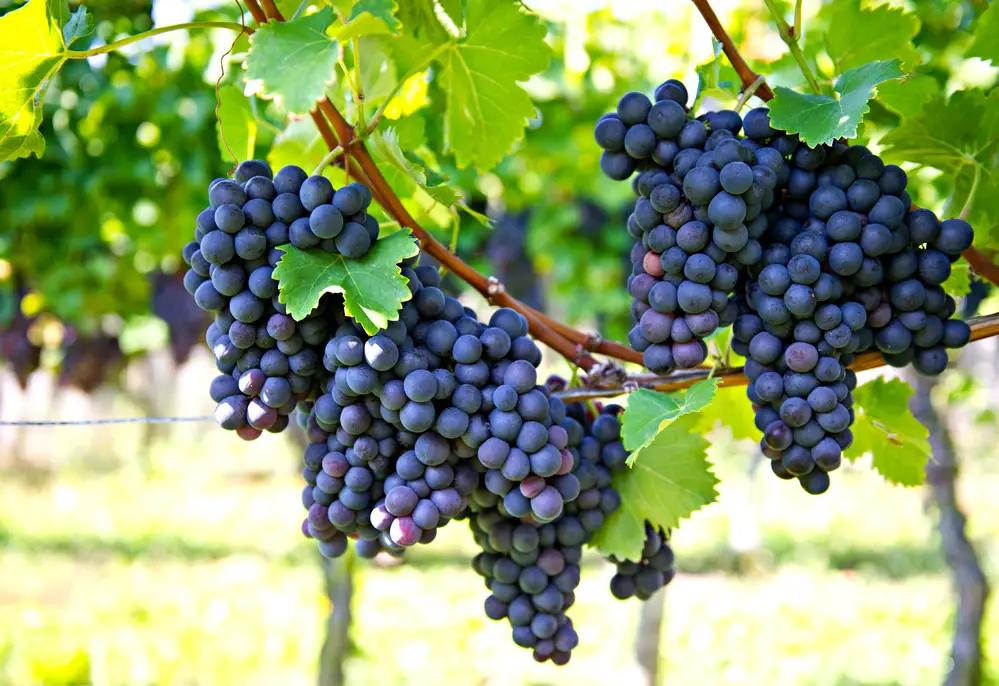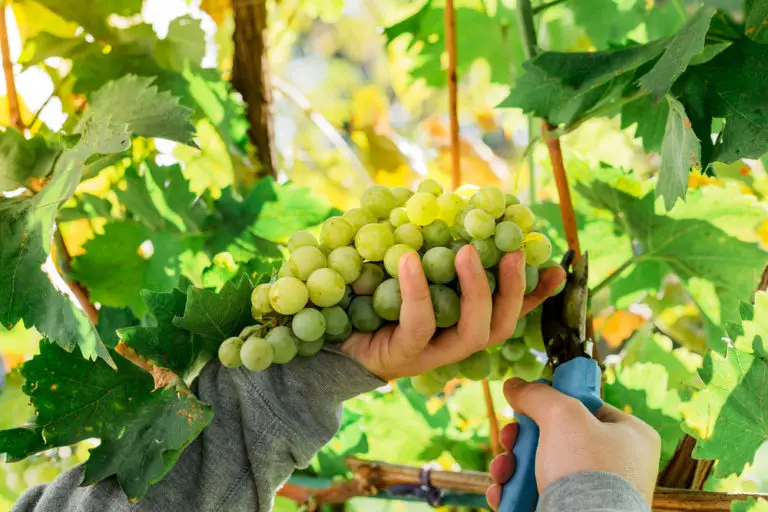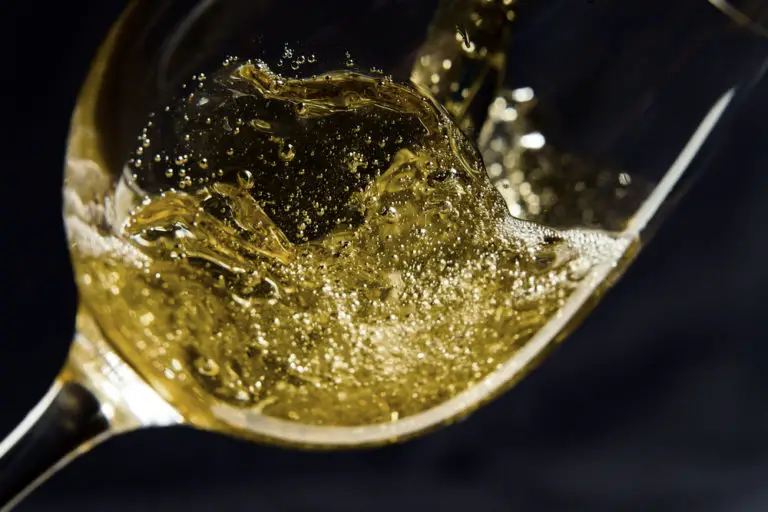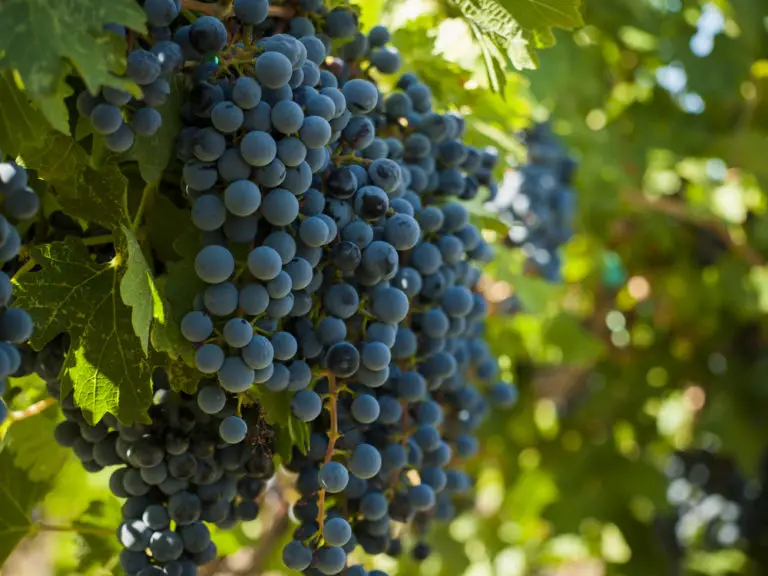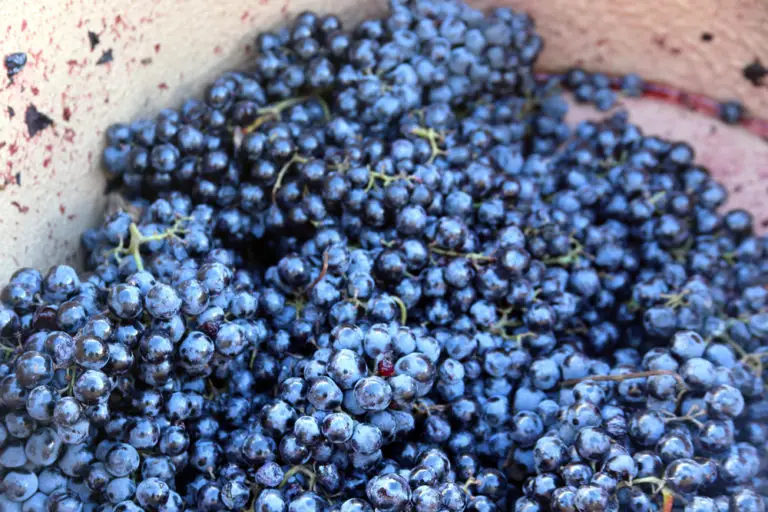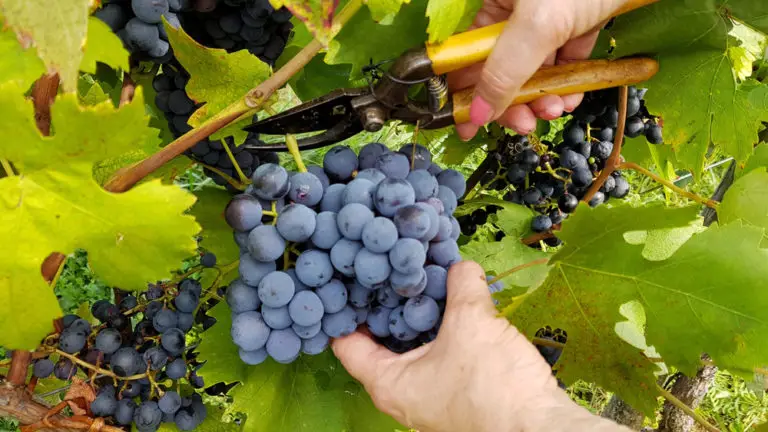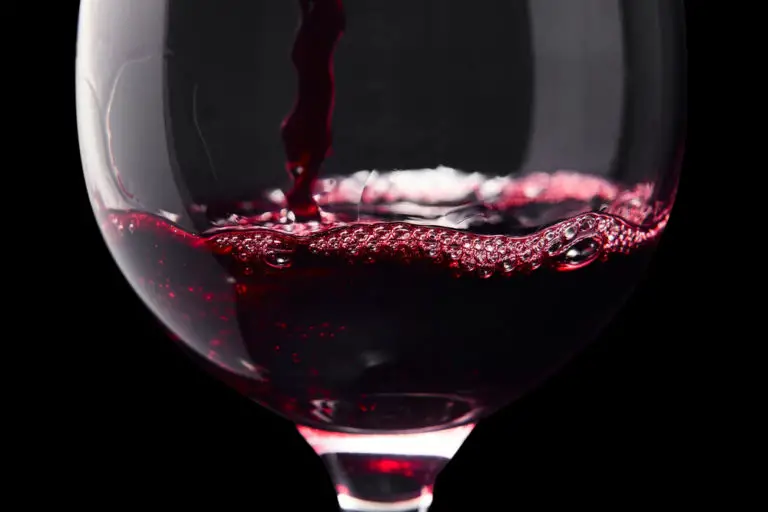Graciano: The Beginners Guide (2024)
Graciano is a red grape variety that was almost extinct. The grape has tough skins, ripens late, and has modest yields.
Due to their intense fragrance and solid acid and tannin structure, the red wines produced by these grapes are of good quality. It was famous in Southern France by the name Morrastel.
- What is Graciano?
- Known Regions for Graciano
- Popular Blends of Graciano
- How to Enjoy Graciano?
- How is Graciano Made?
- History of Graciano
- Alternatives for Graciano
What is Graciano?
Graciano, also called Tinta Miúda, is a red grape variety that is particularly widespread in Spain and Sardinia. In Sardinia, it is called Cagnulari. It is also grown in small quantities in Italy, Portugal, and France. Gracaino pronunciation is Gra-ci-a-no.
The global cultivation area is 3,112 hectares (as of 2010). Ripening takes place late. The berries produce dark red, tannin-rich red wines with a long shelf life and are of very high quality. Due to the low yields of a vine, the proportion of the Graciano variety continues to decline. The grape variety is often blended with Tempranillo. The Graciano alcohol percentage is 12-13%.
It is precisely the high concentration of aromas and the Graciano wine color that makes it so potent, as the wine also has plenty of acidity and only medium-strong tannins. A perfect partner for Tempranillo that balances everything that the Spanish red grape varieties cannot do.
Graciano vs. Grenache vs. Mourvedre
Grenache is a red grape variety that is widespread all over the world and occupies a large number of vineyards. It is most common in France and Spain.
It can be summarized as fruity and fresh, but it is above all the multi-layered, red-fruity aromas that make a Grenache so attractive. A Grenache that has only spent time in stainless steel is significantly more fruity, clearer and fresher than a wine that has been matured in wooden barrels.
The Mourvedre grapes consist of small, thick-skinned, and sweet berries that ferment into the dark, alcoholic and tannic, strong wines, often with a distinct scent of blackberries. Mourvèdre ripens late and needs a warm climate to fully mature.
The berries are small, sweet, and thick-skinned. The wines made from it have a strong structure and can contain a lot of alcohol and tannins. As a rule, the wine style is a bit rustic and reminiscent of wild herbs.
Graciano Characteristics
The Graciano grape variety is a local grape variety from the Rioja wine-growing region. It is believed that it was one of the most important grapes in the Ebro Valley. It produces spicy wines with fine acidity and a lush body. The strong ruby red often shows violet reflections.
The Graciano characteristics are that it is a full-bodied and very voluminous wine, rich, intense, and aromatic on the palate. It leaves notes of fruit and minerals towards the end. The aromas are intense and complex. It has notes of ripe fruit and toast, accompanied by notes of coffee, pencil lead, licorice, chocolate, and spicy.
The intense licorice aromas are characteristic of wines from Graciano. Due to their short shelf life, the Graciano red wine should be drunk young. As a blending partner for classic Rioja wines, Graciano Berry gives the red wine more fragrance and structure.
Graciano Taste Profile
Graciano color is a beautiful ruby that turns into a coppery color with age. This wine is fermented in a wooden barrel, Its process in the barrel gives aromas of vanilla, coconut, toasted, and/or leather notes. It has a velvety note on the palate, and the tannins become softer the longer the wine can be stored. On its own, it produces Graciano ABV of about 12 – 13% with heady aromas.
The classic wine is strong and fruity, has moderate tannins and a good acid structure. A good Graciano can also mature and has typical aromas of plum, cherry, dried fruit, tobacco, leather, chocolate, and spices.
Known Regions for Graciano
Graciano is a typical variety of grape that is grown in the Rioja region, in Navarra and Castilla de la Mancha. It is known by different names in the world and is mostly used for blending.
It is called Xeres in California, Tinta Miúda in Portugal, and Morrastel in France. Let us have a look at some Graciano region:
Rioja region, Spain
This region of Spain is categorized as denominación de Origen Calificada (which is the highest category in Spanish wine regulation). The Graciano grapes grown here are by the autonomous communities, Basque provinces of Álava and Navarre and La Rioja.
Jerez-Xérès-Sherry DOP, Spain
This DOP is located on the south coast of Spain, by the ancient port city of Cadiz. It is one of the top 10 Spanish wine producers by volume. The rolling hills here are formed by a different variety of soil.
Ribatejo Provinces, Portuguese
It is one of the most central provinces of Portugal that does not share its border or coastline with Spain. It contains Spain’s richest agricultural land and belongs to the Santarém District.
Oeste, Portuguese
Oeste is an administrative division of Portugal, located on the country’s western-central coast. It is located between the Atlantic Ocean and the Montejunto Mountain range and is one of the primary fruit-producing regions in Portugal. The landscape of this region consists mostly of fields planted with vines and fruit trees and by the dichotomy of mountain/sea.
Popular Blends of Graciano
Graciano is popularly used for making blends and is seldom made pure. There are a lot of Graciano blends in the market. Let us have a look at some of these blend types of Graciano:
- ‘Costalarbol’ Graciano Blend – This blend consists of 60% Graciano alcohol content, with 20% each Tempranillo and Garnacha. It is fermented at a mild controlled temperature in 3000-liter porous concrete. It has a sleek and composed, gently compelling blueberry aroma. It has a clear structure in the mouth with elongated and fine tannin yielding to a gently persistent acidity.
- La Rioja Alta Viña Arana Gran Reserva – This blend consists of just 6% Graciano for an added backbone. The Gran Reserva is an elegant and fine wine, having notes of coconut and cinnamon from the American oak and vibrant acidity. It has a core of red berry, savory and refreshing tobacco leaf flavors framed by fine, caressing tannins.
- Contino Reserva – This refreshing low-key wine is a blend of Tempranillo, Mazuelo, Garnacha and Graciano. It is refined with subtle oaks, red fruits, deftly integrated oak, and plummy tannins.
- Roda Reserva – This blend is a modern style Rioja which consists of 97% Tempranillo and 3% Graciano. It can age further in the bottle. It has a sweet oaky taste with a zest of fresh, minerally acidity, fine tannins, and a core of black and red fruits. It is a very complex, long, and textured wine, so you will have to hold it before drinking it.
- Cinque – This wine is a blend of five different varieties, namely Tinta Cão, Sousão, Touriga Nacional, Graciano, and Tempranillo. Each variety comes together beautifully to form an intriguing and expressive blend with plenty of spice and earthy notes. The palate is beautifully balanced and rich with a juicy dark fruit forming a coat of suede-like tannins.
How to Enjoy Graciano?
To enjoy any wine, you must master the art of perfecting three things- correct food pairing, optimal temperature, and the right stemware. Not every wine goes with the same settings and can change the taste of wine or food served with it. Let us take a look at the ways of drinking Graciano perfectly.
Food Pairings
Graciano is a complex wine that you can pair with interesting dishes. Meat-based dishes go well with this wine. It works amazingly with grilled chorizo, tri-tip, brisket, or well-spiced lamb. Non-red meat dishes with strong flavors like spicy black tapenade, blackened cajun catfish, and blue cheese also go well with this wine. Some of Graciano wine pairing are:
- Grilled Chorizo – Chorizo is a spicy, smokey dish, high in fat and full of calories. Wines like Graciano compliments grilled Chorizo by providing a refreshment against the fattiness and salt of this grilled dish. The higher acidity of the wine mellows out the heat in the spices and seasoning.
- Brisket – The peppery crust of the brisket compliments the highly acidic Graciano. This dish pairs up with moderate viscosity and mid-weight of the winemaking these two ideals. The texture of wine does not overpower the meal, and the aftertaste of both compliments each other.
- Blackened Cajun Catfish – A creamy blackened Cajun Catfish with high acidity to cut the fat. Graciano is a wine that would be ideal with this dish as it has low tannins, and its earthiness would also compliment the Graciano flavor profile.
Temperature
How a wine tastes widely depends on the temperature. If you leave a glass of white wine in the sun for an hour in summer, you will feel little joy when you drink it afterward.
On the other hand, red wine tastes almost as tasteless as colored water, fresh from the refrigerator. Therefore, there are a few well-tried general rules as to which wine tastes best at which temperature.
In general, the lower the temperature, the more the taste is restricted. On the other hand, wines that are served too warm tend to be too alcoholic and overloaded and the elegance also suffers as a result. The ideal temperature to drink Graciano is 16-18 °C.
Stemware
Using the right kind of stemware makes sure that the aromas and taste of the wine optimally reach you. Some perfect stemware to serve a glass of Graciano are:
- Eisch Unity Sensis Plus glasses – If you are looking for particularly noble and high-quality red wine glasses, there is no way around hand-blown and hand-made glasses. These glasses have a high-quality design and excellent workmanship. The glasses are pleasantly light in the hand and look very elegant at first glance.
- Zalto Denk’art Glasses – This is an elegant hand-made and hand-blown wine glass. It is aimed at discerning connoisseurs and impresses with its fantastic workmanship and filigree design. Various wine glasses emerge from the Denk’Art series, some of which are aimed at special grape varieties.
- Stölzleglasses Quatrophil – This glass is a perfect balance of high quality and an extremely good price-performance ratio. The Quatrophil wine glasses are not handcrafted but still have no connecting seams. Due to the distinctive contour of the goblet, the Stölzle glasses look very modern and cut a fine figure both at a fine dinner and in everyday life.
How is Graciano Made?
The preparation method of Graciano alcohol is similar to any other red wine. It involves multiple steps in production. Let us go through the Graciano winemaking process:
Harvesting
In the first step in the production of this wine, Graciano is picked from the Graciano vineyards and sorted according to quality. Then the individual berries are separated from the stem so that they can be put in the winepress. The separation of the stem ensures that no different aromas can get into the wine, only those of the grapes.
Fermentation
In the next step, the Graciano varietal is first mashed, and the resulting mash (juice, skins, and seeds) is fermented in a fermentation tank. It allows the red color and strong aromas to loosen from the peels.
During fermentation, the organic substances in the grape juice are converted into acids, gases, and alcohol. The sugar in grape juice, which consists of glucose and fructose, is converted into alcohol by yeast bacteria.
These bacteria multiply and produce alcohol as a by-product. If the sugar contained is completely converted into alcohol, the yeast bacteria die, and the grapes are turned into a dry red wine.
Wine pressing
The grapes are then gently squeezed using a press and thus separated from the seeds and skins. The remains, the so-called pomace, are left behind. It is used as fertilizer for the vineyards. Only the fermented grape juice is filled into large stainless steel tanks or wooden barrels and is allowed to mature for a while.
Aging
During the aging process, the strict malic acid contained in the must is converted into creamy lactic acid by adding bacteria (malolactic fermentation). Secondary fermentation in the bottle is therefore impossible.
Clarification & Bottling
Usually, the clarification of red wine is carried out using bentonite (a clay mineral on silica), or agar-agar (polysaccharide). Both ensure that enzymes such as proteins are released from the wine and sink to the bottom.
These would allow the wine to curdle at warmer temperatures and thus lead to the formation of lumps and streaks in the bottle. After the red wine has been bottled, it is stored for some time and then put on sale.
History of Graciano
The exact ancestry of Graciano history is still unclear, but it has now been possible to break down a few genetic relationships by analyzing the DNA.
The grape variety represents one of the parents of the varieties Mandón and Négret Castrais, which are believed to have emerged through natural crossings. Furthermore, genetic overlap with the varieties Bovale Sardo and Cagnulari cultivated in Sardinia was determined.
However, it spread through the Spanish occupation of the island in the 16th century, and so, it can be found today in the Languedoc-Roussillon region in southern France, in Bulgaria, Tunisia, Algeria, Argentina, Brazil, and South Africa. However, this vine achieved very special importance in Spain.
Until 1850, Graciano was one of the most important grape varieties in Rioja. But the phylloxera disaster-hit Graciano so badly that it was threatened with extinction. In 1991, the classification of the Rioja region as a controlled area of origin began, with which Graciano experienced an upswing.
Alternatives for Graciano
If you would like to try some alternatives for Graciano then there are plenty of options in the market. This wine has a deep red color, a strong aroma that can be substituted with the wines like Petit Verdot, Bovale Sardo, and Sangiovese. Here are some details about the Graciano alternative.
Petit Verdot
Graciano wine is a concentrated and dark wine often having a spicy element with licorice scents. It has medium tannins and high acid making it comparable to Bordeaux’s Petit Verdot. Both of these are full of personality, yet they appear in wine as blend and only in single-figure percentages.
Bovale Sardo
Graciano is believed to be similar to the Bovale Sardo. It is appreciated by many producers of Rioja. Bovale Sardo is a spicy, aromatic, and elegant wine. This alternative, similar to Graciano, is often used in the blend but you can also find 100% Bovale Sardo easily. Both these wines have firm tannins and excellent acidity (depending on the winemaking process).
Sangiovese
This Italian red wine is characterized by a rather light red color and a pronounced structure with a high acid and tannin content. Because of the same structures, both these wines have a lot of similarities. This wine is also often blended with international grape varieties and matured in barriques. It lies on the high end of the scale when it comes to alcohol.
FAQ
What is Graciano wine?
Graciano is a black-skinned wine grape that is intensely perfumed, deeply colored, and moderately tannic having aromas of chocolate, violets, and mulberry. It is grown in the Navarra and Rioja region of northern Spain.
Is Graciano the same as Grenache?
No, Graciano is not the same as Geranche. Graciano is also known as Cagnulari, Graciana, Tinta Do Padre Antônio, Tinta Miuda, Xeres, Tanat Gris and Tintilla de Rota.
What does Graciano pair with?
Graciano makes an excellent pair with meat-based dishes like grilled chorizo, well-spiced lamb, brisket, tri-tip, and non-red-meat dishes like spicy black tapenade, blue cheese, and blackened cajun catfish.
Is Graciano dry or sweet?
Graciano is a dry red Spanish wine. This wine is characterized by its deep red color, strong aroma, and ability to age well.
What does Graciano mean?
Graciano name is a Spanish and Portuguese name that comes from the Roman name Gratianus. It means beloved and dear. In Italian, Graciano meaning is welcoming or pleasing.
What does Graciano taste like?
Graciano is a black-skinned grape that yields deep, dark juice. The Graciano flavors are intense and fruity. Graciano taste is also influenced by hints of cedar, mint, and violet notes.

